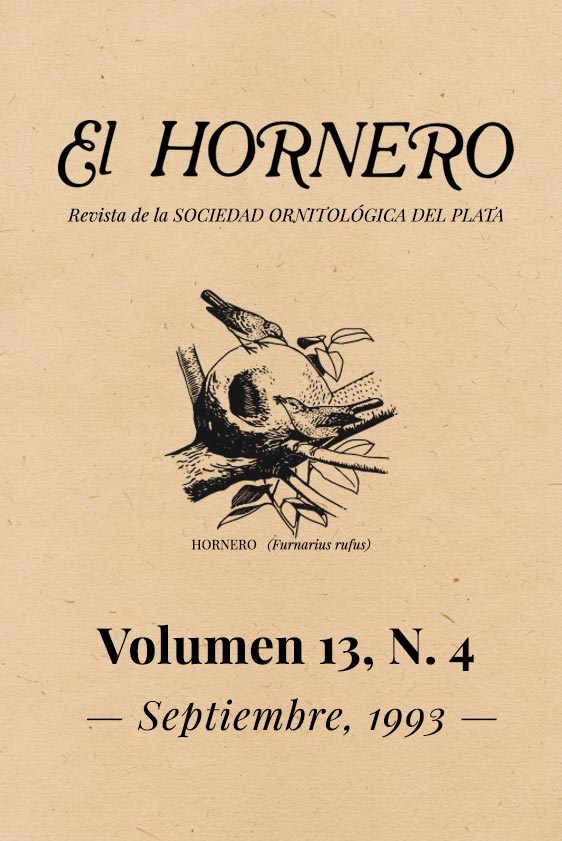Abstract
In this paper we describe a case of polygyny in the American Kestrel (Falco sparverius). Two females had their nests within the territory of a male. The male copulated with the two females and defended their territory against intruders. The male played the usual male role with one female (primary) but never was seen feeding the other one (secondary). Secondary female managed to go through incubation and part of the nestling period (at least up to day 10 of nestling's life) without the aid of the male.
References
Balgooyen,T.J.1975.BehaviorandEcologyoftheAme-ricanKestrel(Falcosparverius)inSierraNevadaofCalifornia.Univ.Calif.Publ.Zoo.103:1-83.
Bart,1.y A.Tornes.1989.Importanceofmonogramousmalebirdsindeterminingreproductivesuccess.Be-hay.Eco.Sociobiology24:109-116.
Cabrera,A.L.1976.RegionesfitogeográficasArgentinasBs.As.Acme.EnciclopediaArgentinadeAgriculturay Jardinería.
Cramp,S.J.yK.E.Simmons.1980.HandbookoftheBirdsofEurope,lheMiddleEastandNorlhMrica.TheBirdsoflheWesternPaleartic.Vol.2 HawkstoBustards.OxfordUniversityPress.
DeLucca,E.R.1992.Métodosy éxitodecazadeunahembradeHalconcitoColorado(Falcasparverius)enlapatagonia.NuestrasAves26:25-26.

This work is licensed under a Creative Commons Attribution-NonCommercial 4.0 International License.





